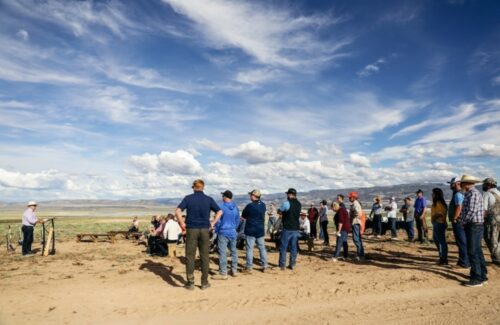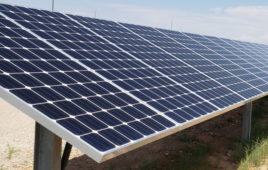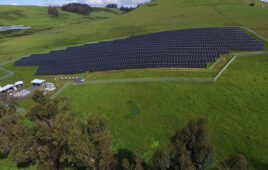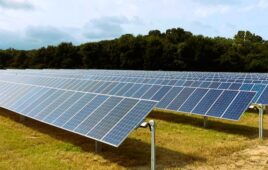Renewable energy developer rPlus Energies has commenced construction of the 200 MWAC/240 MWDC Appaloosa Solar 1 project located in Iron County, Utah.

Credit: rPlus Energies
Appaloosa Solar 1 is being built next to the 80 MWAC/110 MWDC Three Peaks Solar project. Completed in 2016, Three Peaks Solar was the second utility-scale solar project developed in Utah by the same leadership team that now heads rPlus Energies.
“We are proud to be back in Iron County with a third project, the largest to date,” said Luigi Resta, president & CEO of rPlus Energies. “Iron County has been a fantastic, supportive community and we are happy to continue our approach to build in Utah, by Utah and for Utah with this project.”
Sundt Construction, which built the rPlus-developed Graphite Solar Project in Carbon County earlier this year, is providing engineering, procurement and construction for Appaloosa Solar 1. The rPlus team will remain involved with construction management and community relations.
The project is expected to create approximately 250 construction-related jobs. The Appaloosa Solar 1 project has two long-term power purchase agreements in place with PacifiCorp on behalf of Meta. The contract was developed under Rocky Mountain Power’s Schedule 34 green energy tariff, which allows large customers to purchase renewable energy generated on their behalf.
News item from rPlus Energies





Interesting, the rPlus web site mentions another project in Utah the Green River solar PV farm with 400MWac and a 200MW BESS. Why not build this Apaloosa project with at least 100MW BESS, it is already setup with a 1.2 to 1 D.C. to A.C. buss ratio.
It’s not like solar PV farms are small footprint projects. There seems to be a disconnect where alternative ESS is not being chosen, developed and applied to these distributed projects being constructed now. There have been some strides made in redox flow batteries of differing ion mixes, molten metal/salt batteries AMBRI molten salt battery is being built at SolarTAC in Colorado, even “off the shelf” components for systems like liquid-air long term energy storage designed by hydrostor (A-CAES). EPC entities need to start offering these solutions to prospective customers in the utility sector.